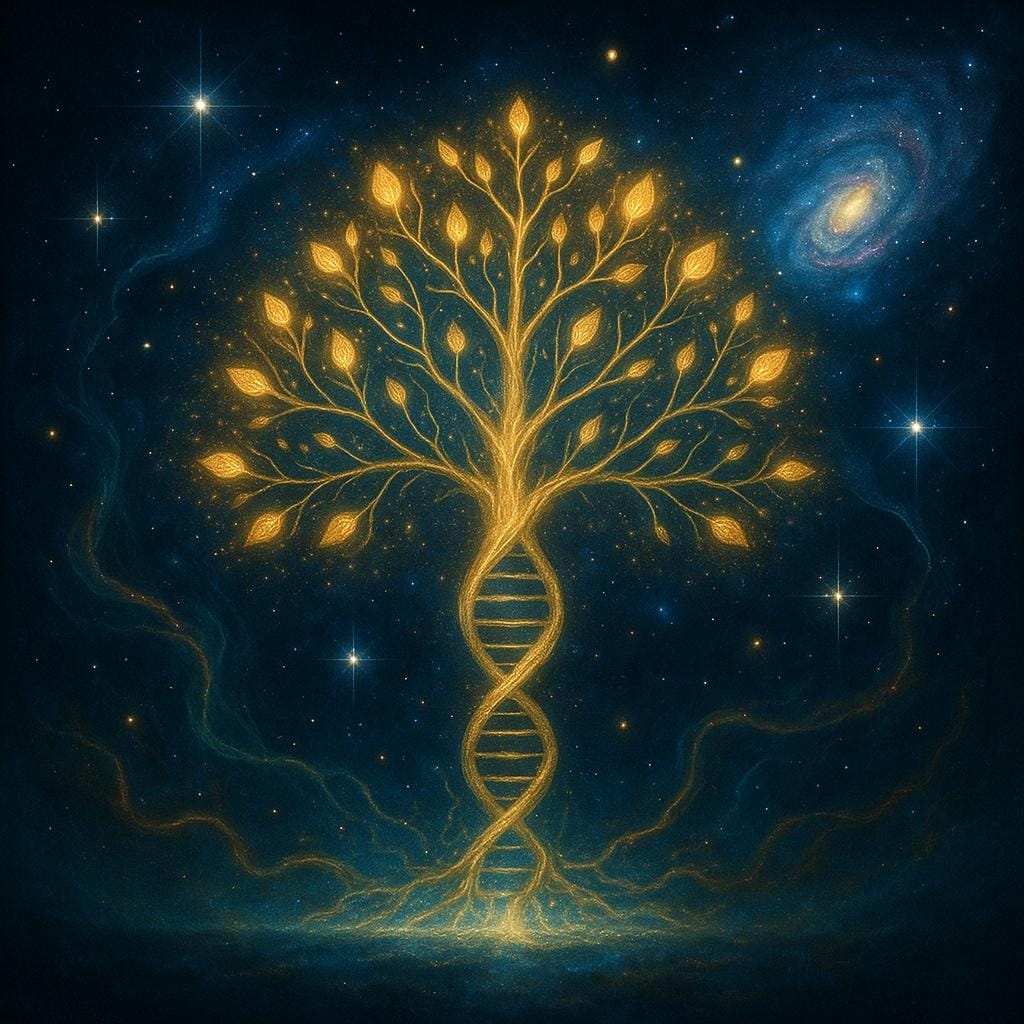Are All Living Things from the Same Source?
#science #life #biology #existence #evolution

The Mystery of Life’s Origin
Where does life come from?
It’s a question that has fascinated scientists, philosophers, and spiritual thinkers alike. One thing we do know is this: life, as far as we’ve ever observed, only comes from something that is already alive. We've never witnessed life spontaneously appearing from nothing. Despite our technological and scientific advancements, the origin of life—abiogenesis—remains a mystery.
A Single Spark—or Many?
If life can only come from life, then it naturally raises the question: did all living things come from a single, original source of life? Was there a first living cell, a primordial ancestor, from which everything else descended? Or could there have been multiple independent origins of life—separate sparks that ignited in different places, at different times?
Beyond Earth, Beyond Understanding
It could also be that the source of our life force wasn’t even from this world—or this universe—as we understand it. Perhaps it wasn’t the result of a rare chemical "spark" at all. What if the essence of life came from something radically different: an external system or dimension, beyond the limits of our current physical or logical models? This isn’t just a nod to the idea of extraterrestrial life or "aliens," but an openness to something even more mysterious—something unknown that might transcend the very rules we think govern reality.
The Case for Common Ancestry
Science currently leans toward the universal common ancestor hypothesis—the idea that all known life shares a common root. This is partly because all known organisms use the same basic genetic code and cellular structures, which strongly suggests a shared origin. However, just because it's the dominant theory doesn't mean it's the final word. The reality is: we don't know for certain.
What Evolution Tells Us
Then there's evolution. It's often described as a theory, but in science, that word doesn't mean what it does in everyday conversation. The theory of evolution is one of the most rigorously tested frameworks in biology, supported by mountains of evidence. However, our understanding of how entirely new species emerge—or how complexity arises—is still evolving itself. What we mostly observe today are adaptations: species fine-tuning themselves to their environments, not entirely new forms of life suddenly appearing.
A Silent Earth, A Slower Clock?
That’s what makes the current state of Earth so interesting. We have millions of species—some thriving, some endangered—and yet we don’t see new life forms appearing in obvious ways. You might expect, with such a crowded and dynamic biosphere, that something radically new would emerge more often. But instead, evolution today appears to operate on a slower, more incremental scale.
So, What’s the Answer?
So, are all living things from the same source?
We don’t know. Maybe yes. Maybe no. But the question itself reminds us how much wonder—and how many mysteries—still live within the world around us.
📚 Further Reading
- Abiogenesis – Britannica
- The RNA World Hypothesis – Nature
- LUCA: The Last Universal Common Ancestor – Nature
- Understanding Evolution – UC Berkeley
- Speciation – Khan Academy
- Panspermia Theory – NASA Astrobiology
- Life May Have Emerged a Cosmic Eyeblink after the Big Bang – Scientific American
- Simulation Hypothesis – Scientific American
- Does the Evolution of Complex Life Depend on the Stellar Spectral Energy Distribution? – Liebertpub
- Last Universal Common Ancestor (LUCA) – Wikipedia
- Did Life on Earth Come from Outer Space? – Astronomy
- Are We Alone in the Universe? Revisiting the Drake Equation – NASA